Since March 2020, photographer Mark Leong has been documenting how the coronavirus pandemic has impacted people who live outside. These images span the time period between April 2020 and March 2021, bringing us from the very early days of the pandemic into the present.
Thus far, we have seen much less viral spread on the street than many expected. This comes as cities across the country have paused encampment sweeps and poured money into housing homeless people in shelter-in-place hotels and testing folks on the street; as rent strikes have kept many housed who lost their jobs; as community members filled in the gaps where aid was needed.
However, now that the vaccine rollout has begun, certain fascets of pre-pandemic life on the street have started to creep back in. Encamment sweeps have ramped back up; the closure of shelter-in-place hotels is looming; and the federal eviction moritorum was struck down by the supreme court. Meanwhile, the delta variant has started to spread, and health officials are seeing an uptick of COVID cases on the street. These developments remind us that the book is far from closed on how COVID will impact unsheltered communities.
Mark Leong’s photos have appeared in National Geographic, Smithsonian, and The New Yorker. You can find more of his photography at www.markleongphotography.com.
Photos by Mark Leong
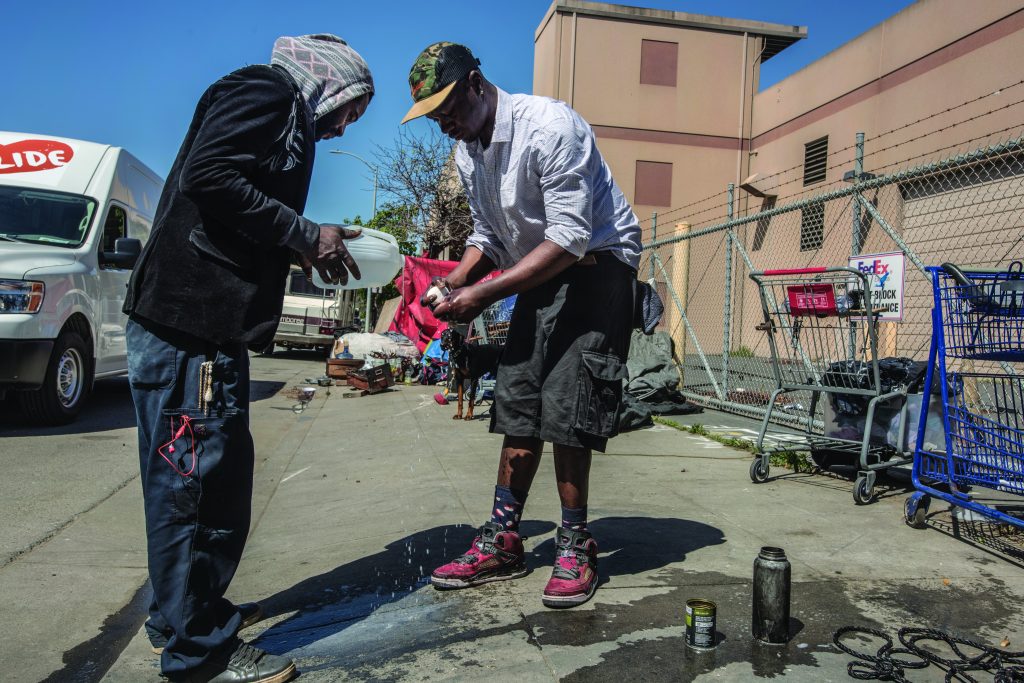
APRIL 15, 2020. Leon and another resident of a Bayview encampment in San Francisco wash their hands with a bar of soap. As the pandemic set in, unsheltered people became increasingly conscious about sanitation, using the resources they had to keep clean. They get their water from tapping a fire hydrant. Leon hopes to make a filter system to better clean the water.
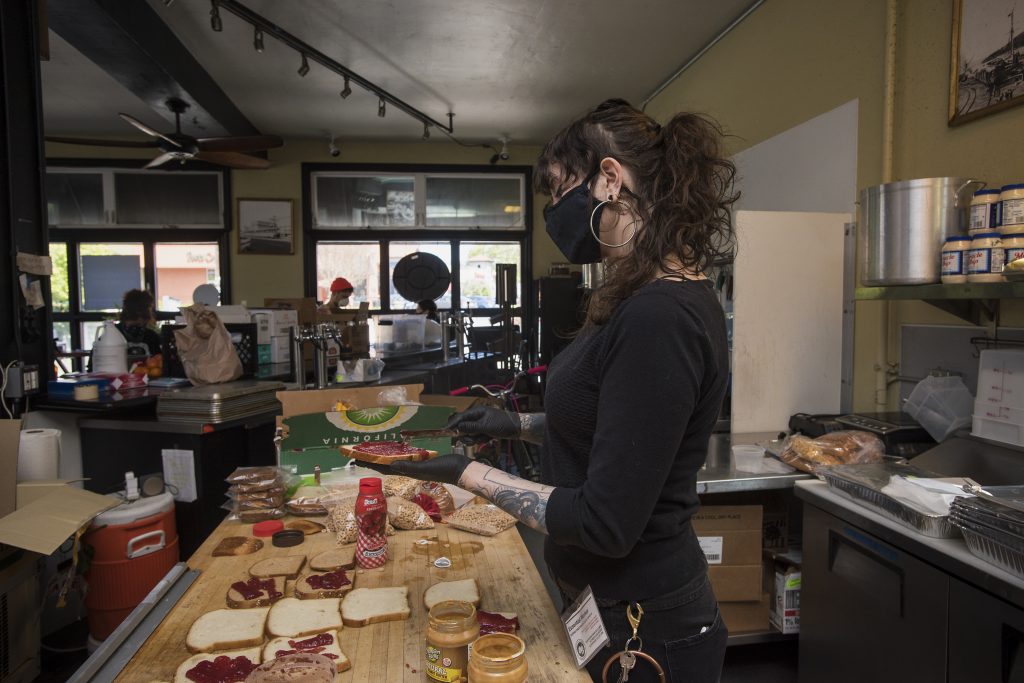
APRIL 19, 2020. West Oakland Punks With Lunch prepares their weekly distribution. The lunch bags include peanut butter and jelly sandwiches, goldfish crackers, yogurt covered blueberries, condoms, water and safe drug use kits. As many meals and services ground to a halt, grassroots organizations like Punks With Lunch kicked their operations into high gear to help fill the gaps.
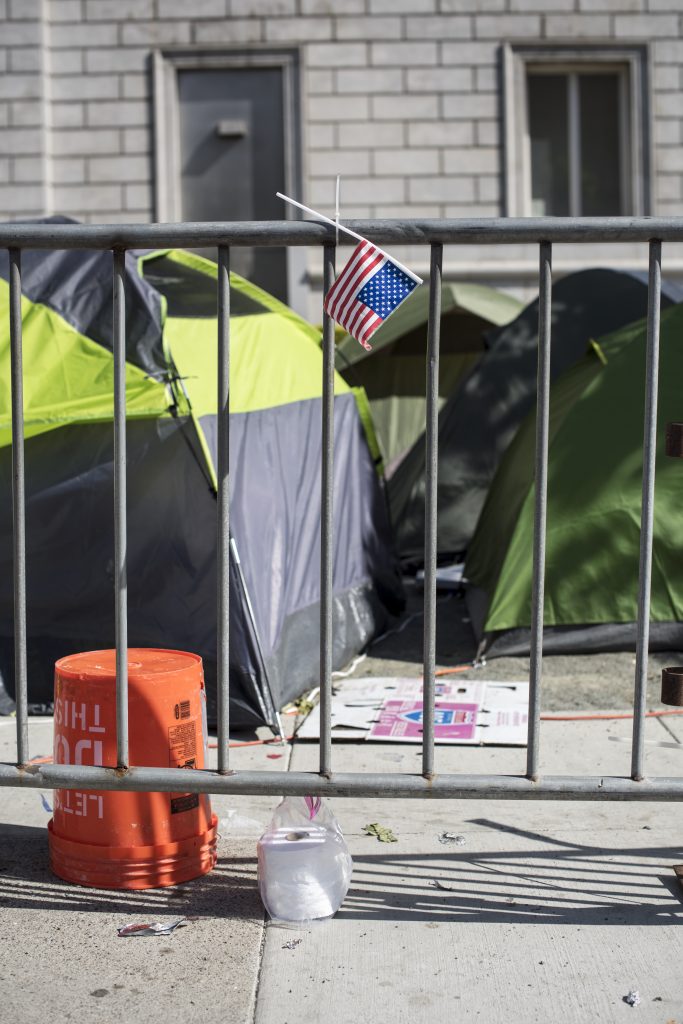
MAY 7, 2020. As homeless shelters slashed capacity to prevent COVID outbreaks, many who typically slept in shelter beds turned to the street. In the city’s Tenderloin neighborhood, the number of tents on the street increased by almost 300 percent.
San Francisco temporarily allowed unsheltered people to set up tents next to the Asian Art Museum on Fulton Street, as pictured in this image.
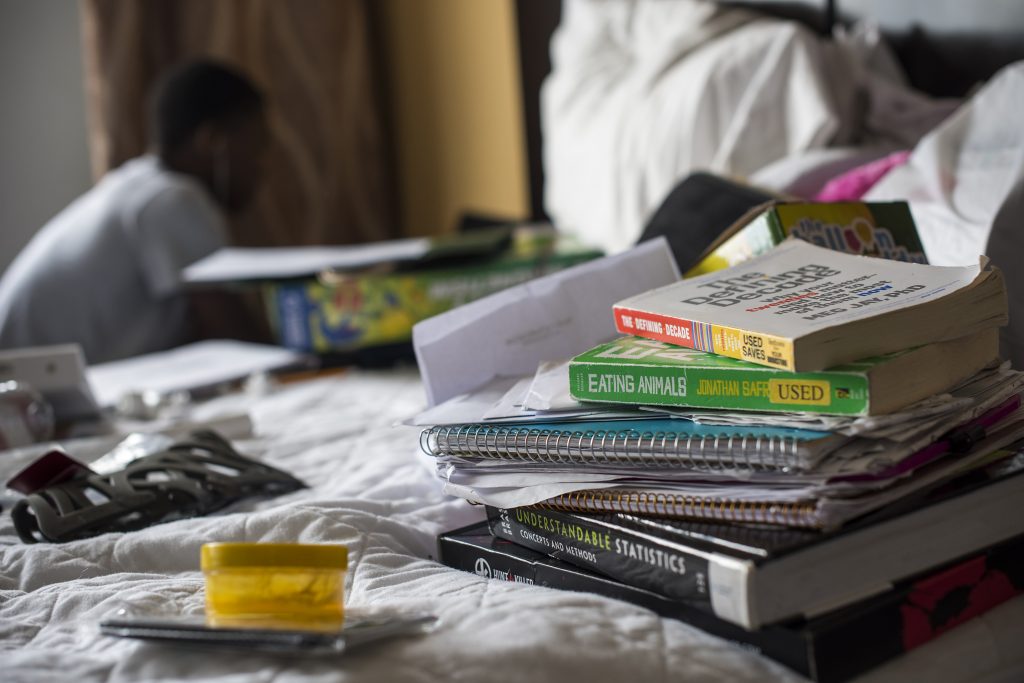
JUNE 5, 2020. After losing her job during the lockdown, a mother can no longer afford rent at her apartment. She and her son become one of numerous families to be housed in a hotel. They are both taking virtual classes—he at middle school and she at Berkeley City College.
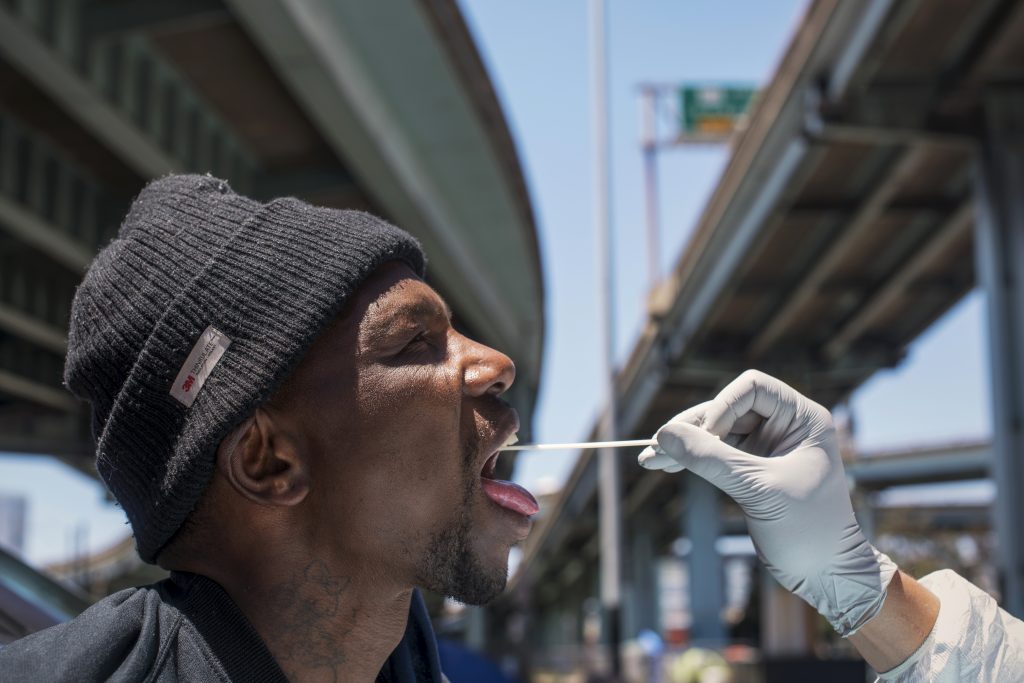
JUNE 7, 2020. Eric, 41, gets a COVID test in the Bayview neighborhood of San Francisco. Eric is one of thousands of houseless people who have been tested for COVID in the Bay Area to date.
In Alameda County, the Healthcare for the Homeless department has coordinated or adminstered over 11,000 COVID tests for unhoused people since the start of the pandemic
The number of COVID cases on the street has increased in recent months. To combat this, healthcare providers are doubling down on strategies that served them in the early days of the pandemic.
“I think our testing strategy is helping,” Dr. Harrison Alter, the previous Medical Director for Alameda County Healthcare for the Homeless, told Street Spirit in February 2021. “We do a combination of response-related testing and community care testing. I think those two strategies have provided our homeless community in Alameda County with a pretty comprehensive approach to testing.”
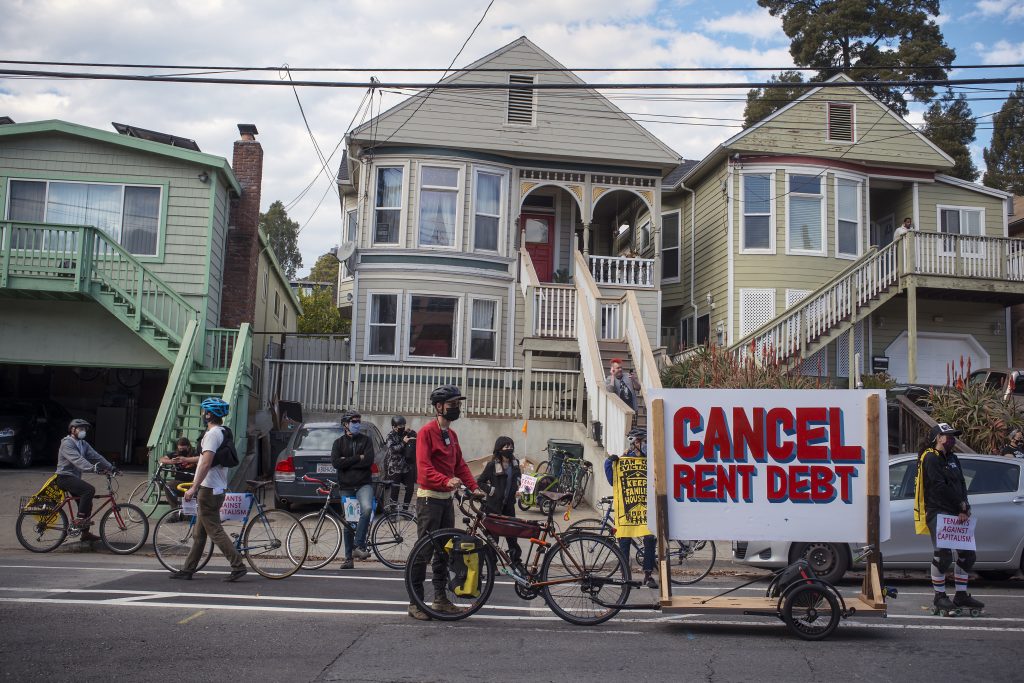
DECEMBER 5, 2020. A “Cancel Rent” rally in Oakland. The rally was organized by various Oakland tenant’s unions. Tenants organizing blew up during the pandemic, as renters banded together to coordinate rent strikes and housing justice for renters.
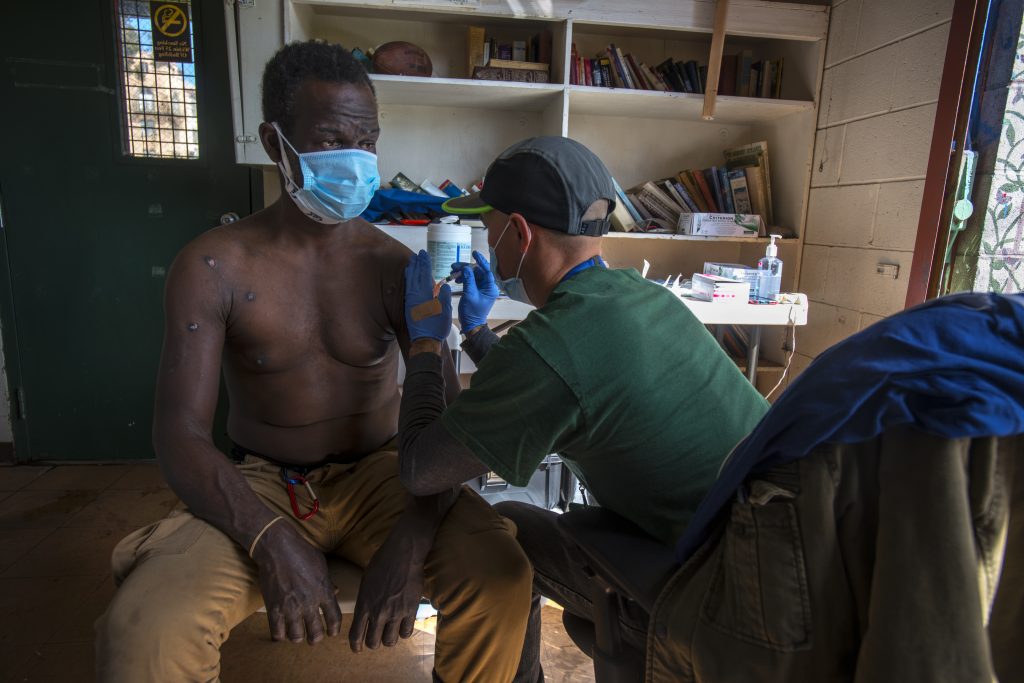
MARCH 16, 2021. Providers from LifeLong Medical’s street medicine team set up a vaccination clinic in People’s Park. This came at the beginning of the county’s effort to vaccinate unsheltered people.
“I think there’s a perception that homeless people don’t care if they get or spread illness, which is not true,”said one houseless woman who got vaccinated at People’s Park that day.
Unhoused people are getting vaccinated at a lower rate than the rest of Alameda County. As of this writing, some-60 percent of unhoused people have been vaccinated in the county, compared to the 79 percent of the general population that is fully vaccinated.
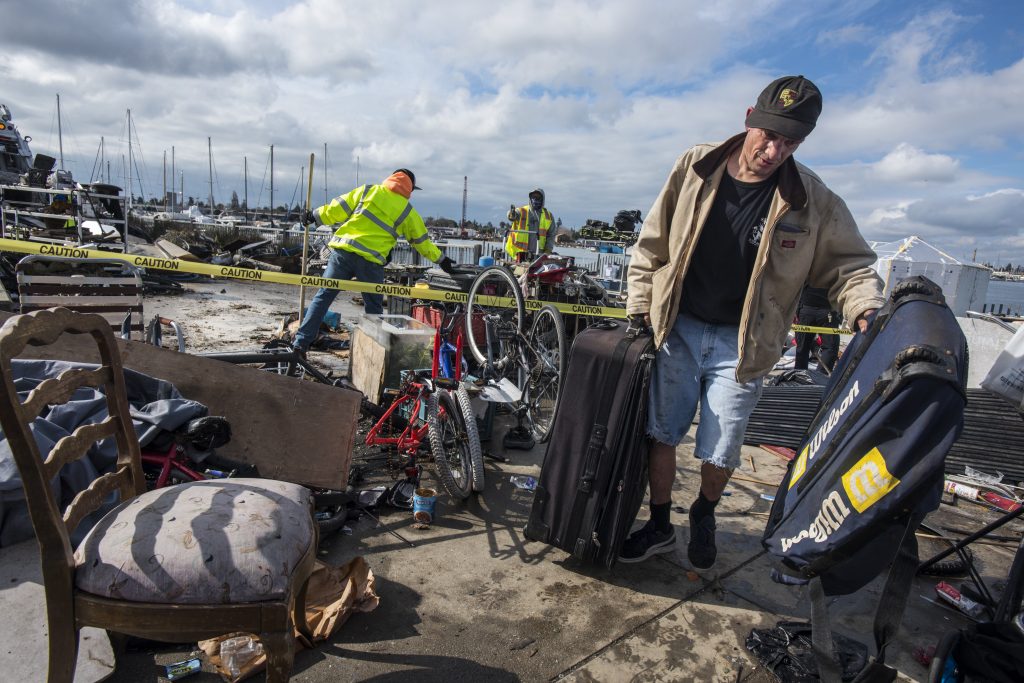
MARCH 11, 2021. Michael salvages his belongings as city workers sweep the encampment at Oakland’s Union Point Marina. Early in the pandemic, many Bay Area cities slowed or halted encampment sweeps, in accordance with CDC guidelines, which cautioned that breaking up encampments could be a catalyst for viral spread. However, in recent days, city and state officials have resumed encampment sweeps—there were a large number of encampment closures in Alameda County in the month of August.
CORRECTION: The print version of this story stated that the “Cancel Rent” rally on December 5 took place in San Francisco, rather than Oakland. Additionally, the print version misstates that the encampment next to the Asian Art Museum was on Folsom Street, rather than Fulton Street. We have corrected the errors online.
Alastair Boone is the Director of Street Spirit.
